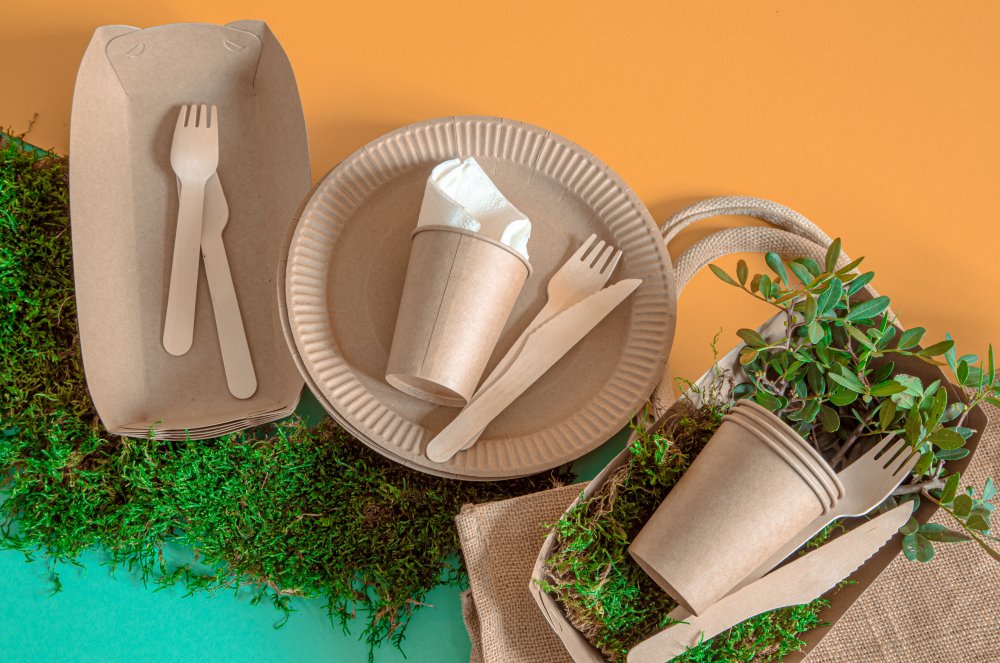Let’s face it—food packaging is everywhere. From the takeaway you ordered last night to the veggies wrapped at the grocery store, packaging is a part of our daily lives. It keeps food fresh, makes transportation easier, and helps brands stand out. But there’s a flip side too—it’s also a major contributor to environmental waste, especially when made from single-use plastics.
That’s why there’s a growing push toward sustainable food packaging—a smarter way to protect both our food and the planet.
Why We Need to Rethink Food Packaging
It’s easy to overlook just how much packaging we go through every day. Think about your last meal—how much of it came wrapped, boxed, or sealed? Traditional food packaging, while useful, often ends up clogging landfills or polluting oceans. And most of it? It’s not going anywhere anytime soon.
What we need is sustainable packaging that does the job without sticking around for centuries.
So, What is Sustainable Food Packaging?
In simple terms, sustainable food packaging is packaging that’s better for the environment. It’s made from materials that are renewable, biodegradable, compostable, or recyclable—and sometimes, all of the above.
Some common examples you might’ve already seen:
- Paper or cardboard containers instead of plastic boxes
- Compostable pouches made from cornstarch or sugarcane
- Reusable glass jars or metal tins
- Plant-based films and wrappers
These options help reduce waste, use fewer natural resources, and make it easier for both individuals and businesses to make eco-friendly choices.
Why It Matters More Than Ever
You might wonder: Does switching to a paper wrap or compostable bag really make a difference? The answer is yes—and here’s why:
- Lower carbon footprint: Materials used in sustainable packaging generally require less energy to produce and break down faster.
- Less waste in landfills: Compostable or biodegradable options don’t sit in landfills for hundreds of years.
- Safer oceans: Swapping out plastic helps reduce marine pollution and keeps wildlife safe.
- A step toward circular living: Many food packaging alternatives are designed to be reused or recycled, keeping them in the loop rather than in the trash.
It’s not just about saving the planet—it’s about creating smarter systems that work with nature, not against it.
Innovation is Changing the Game
The good news? People are getting creative. Companies, startups, and researchers are constantly coming up with better and more affordable ways to make sustainable packaging a part of everyday life.
Some of the exciting developments include:
- Edible packaging made from seaweed or rice (yes, you can literally eat it)
- Mushroom-based packaging that breaks down in your compost
- Smart packaging that tells you if your food is still fresh
The goal is to combine convenience with responsibility—and the future of food packaging is looking a lot greener.
But It’s Not Always Easy
As great as it sounds, switching to sustainable food packaging isn’t always simple.
- It can cost more. Biodegradable or compostable materials often come at a higher price.
- Not all areas are ready. Many places still lack proper recycling or composting systems.
- There’s confusion. Sometimes, people don’t know how to dispose of “eco” packaging correctly, and it ends up in the wrong bin.
- Regulations vary. What’s allowed or supported in one city might be restricted in another.
That said, small steps lead to big change. And as more businesses and consumers make the shift, prices go down, infrastructure improves, and sustainable options become more accessible to everyone.
What Can Businesses Do?
If you run a food business, switching to sustainable packaging isn’t just good for the environment—it’s good for your brand too. Today’s customers are paying attention, and they prefer to support companies that care.
Here’s how you can get started:
- Start with a packaging audit: What are you using right now, and what can be replaced?
- Choose trusted suppliers offering certified compostable or recyclable options.
- Educate your customers with clear disposal instructions.
- Test with a few products first, then scale as you go.
- Track your progress—every bit of waste reduced counts.
Your switch to sustainable food packaging can even become part of your story. It’s something people appreciate—and remember.
Final Thoughts
We all have a role to play when it comes to protecting the environment. And believe it or not, something as small as your choice of food packaging can make a real difference. Whether it’s a compostable bag, a reusable box, or even just saying no to unnecessary wrapping—it all adds up.
Sustainable food packaging isn’t just a buzzword—it’s part of a larger movement toward thoughtful living, responsible choices, and a cleaner planet. So the next time you pick up a packed lunch or order groceries, take a moment to notice the packaging. Ask yourself: Is this helping the environment—or hurting it?
Because the change starts with everyday decisions. And this one? It’s worth making.


